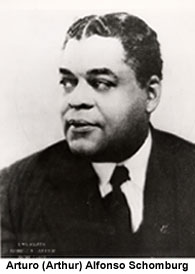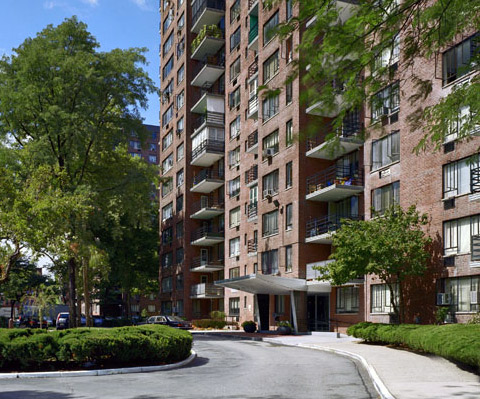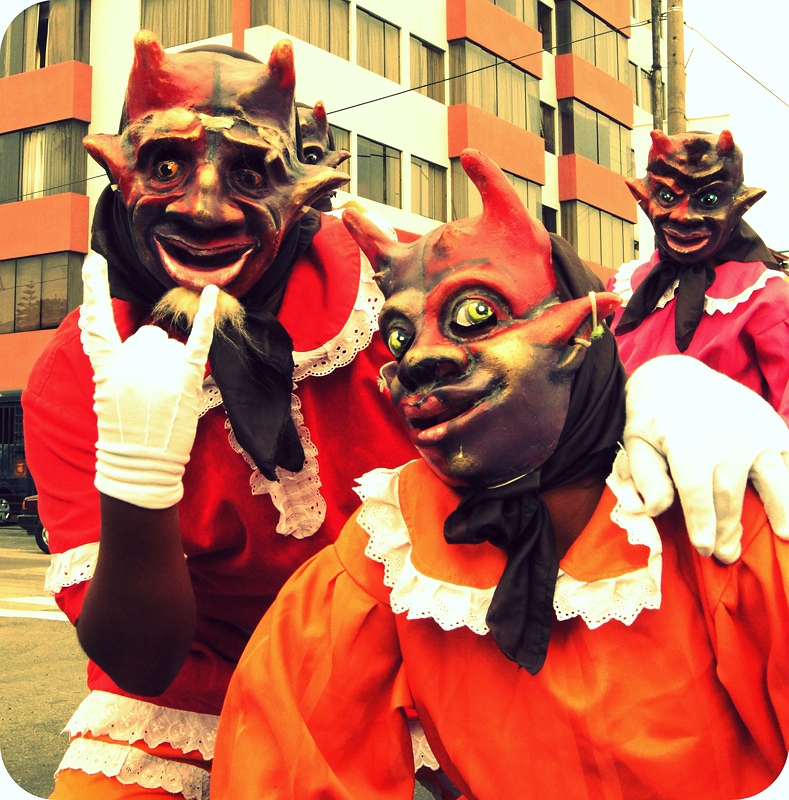This blog is about my exposure to the Spanish language and various Latin-American cultures through travel and research; particularly Black/Afro-Latino.
Wednesday, January 29, 2014
Friday, January 24, 2014
“Blacks Have No History!”
San Juan, Puerto Rico
January 24, 1874 – June 8, 1938
January 24, 1874 – June 8, 1938
Over the years, Arturo Alfonso collected literature, art, slave narratives, and other materials of African history, which was purchased to become the basis of the Schomburg Center for Research in Black Culture, named in his honor. The Schomburg Center is a branch of the New York Public Library located on Malcolm X Boulevard in Harlem, New York City, has been an integral part of the Harlem community since its inception. In 1978, the original building located around the corner on 135th Street between Malcolm X Blvd. and Adam Clayton Powell Blvd was entered into the National Register of Historic Places.
Every time I'm in New York, I always make to the
Schomburg Center for Research and Black Culture
Arturo Alfonso Schomburg was educated at San Juan's Instituto Popular where he learned commercial printing. At St. Thomas College in the Danish-ruled Virgin Islands, he studied Negro Literature. Schomburg immigrated to New York on April 17, 1891, and settled in Harlem, New York City. He continued his studies to untangle the African thread of history in the fabric of the Americas. After experiencing racial discrimination in the US, he began calling himself Afroborinqueño (Afro-Puerto Rican). He became a member of the "Revolutionary Committee of Puerto Rico" and became an active advocate of Puerto Rico and Cuba's independence from Spain.In 1896, Schomburg began teaching Spanish in New York. From 1901 to 1906 Schomburg was employed as messenger and clerk in the law firm of Pryor, Mellis and Harris, New York City. In 1906, he began working for the Bankers Trust Company. Later, he became a supervisor of the Caribbean and Latin American Mail Section, and held that until he left in 1929. While supporting himself and his family, Schomburg began his intellectual work of writing about Caribbean and African-American history.
He was the co-editor of the 1912 edition of Daniel Alexander Payne Murray's Encyclopedia of the Colored Race. In 1916 he published what was the first notable bibliography of African-American poetry, A Bibliographical Checklist of American Negro Poetry.
The Lenox Terrace apartments in Harlem, NY where I
grew up was only one block from the Schomburg Center
After the NYPL purchased his extensive collection of literature, art
and other materials in 1926, they appointed Schomburg curator of the
Schomburg Collection of Negro Literature and Art, named in his honor, at
the 135th Street Branch (Harlem) of the Library. It was later renamed
the Arthur Schomburg Center for Research in Black Culture. Between 1931 and 1932 Schomburg served as Curator of the Negro Collection at the library of the historically black Fisk University, Nashville, Tennessee, helping direct their acquisition of materials. grew up was only one block from the Schomburg Center
Arturo Alfonso Schomburg's work served as an inspiration to Puerto Ricans, Latinos and African-American alike. The power of knowing about the great contribution that black people have made worldwide, helped continuing work and future generations in the Civil rights movement.
Sunday, January 19, 2014
Son de los Diablos: Black Peruvian Rhythm of Devils
The Son de
los Diablos (Rhythm of the Devils) is an Afro-Peruvian dance involving a
mixture of African, Spanish, and Indigenous rhythms was banned from religious celebrations by
the Catholic Church in 1817 because of its heavy African, and supposedly, devilish influence.
Jawbones of donkeys, horses, and mules were
used for rhythms of Afro-Peruvian music.
used for rhythms of Afro-Peruvian music.
After the
independence of Peru in 1821, the black folks lived in alleys near
churches and plazas of Lima, the nation's capital, where festivities were held. Before the
celebrations, blacks joined the festivities by forming gangs that danced the
Son de los Diablos. Nonetheless, the dance remained an important part of
carnival celebrations in Lima up until the early 20th century. The dance again
was revived in the 1950s.
The Cajita (little box), an Afro-Peruvian percussion instrument
A distinguishing factor of the Son de los Diablos is its usage of such instruments as the Cajita, a small wooden box that opens and closes creating a distinctive sound, and the Quijada, the jawbone of a horse, donkey, or mule, that when hit creates a raspy buzz. Like other parts of the Americas that underwent a slave trade, the African drum was forbidden and the slaves had to get creative with their feet, and other makeshift instruments to continue their African rhythms.
Son de los Diablos performance by Perú Negro
Wednesday, January 15, 2014
African-Americans Learning Spanish and Other Languages
Internationally acclaimed attorney, entertainer, and
activist Paul Robeson learned 20 languages.
activist Paul Robeson learned 20 languages.
Phylicia Rashad learned Spanish while living in Mexico as a child when her parents sought to escape racism in the USA.
Recently, I was in a Mexican restaurant where I have a Spanish-speaking rapport with the owner and his staff. When I walked in, a new employee waited on me, and began to laugh when I ordered in Spanish. Annoyed, I asked him if I said anything funny. He responded no, he was just surprised and impressed with my Spanish. I then went into my educational diatribe and informed him of my Latin American travels where I met Asians, Middle Easterners, and whites, let alone blacks, who speak Spanish.
Koby Bryant spent part of his childhood
in Italy and is fluent in Italian
When I sit down and think about it, African-American people like Jelisa and I are indeed in the minority when it comes to taking the time to learn to speak a second or third or more languages. Jelisa expressed a concern in her writing as to whether there is something off-putting about learning a new language in the African-American community.
Former baseball manager Dusty Baker
is fluent in Spanish
Exceptions do abound, however, such as an ex-girlfriend, Donna, who speaks French and has knowledge of three other languages. In Oakland, where I live, I was pleased to learn about a Black Spanish-speaking meet-up group. When I traveled to Cuba for a Spanish-language intensive training at the University of Havana (legally through Global Exchange, Inc.), I met black Americans who are much more proficient with the language than I am, but collectively, we were still grossly outnumbered by white students. I marveled at classmates from places like Belgium and Germany who took such a strong interest in learning about Afro-Cuban religion and culture, let alone the language, when black Americans were specifically encouraged to join us in the exploration.
Rap artist turned movie star Will Smith
is fluent in Spanish
A few years later, I made my first of several trips to Perú for another Spanish-language intensive training. Out of all the students from the US, England, and other European countries there to study Spanish, I was the only black in the whole school, and like Jelisa, I wondered why. I agree with her of the need to learn a second language and to be culturally sensitive in a world that is becoming more global, and how this can elevate our own community as well. I personally chose Spanish because I grew up around Spanish-speaking people. At an early age I was exposed to salsa and Latin jazz music, some of which were featured on local African-American radio stations.
Saturday, January 11, 2014
Is Learning a New Language Something That Only White People Do?
Guest Post by Jelisa Robinson
Black Girl, Latin World
I’ve sat in upper division spanish courses. In a class of 30
people, I quickly noticed that I was the only Black person in the room.
My white (non-latino) counterparts would bust their spanish and talk
about their travels to South America or Mexico. They would proudly
profess their love for Latin culture and embrace Afro-Latino religions.
I sometimes wondered why so few people of color were in my Latin
American studies and Spanish courses. Even when the courses were geared
around AfroLatinidad, there weren’t many African Americans in the
classes. Is there something that is off putting about learning language
for my community?
In a world that is becoming more global, I feel that learning about
other cultures and speaking other languages is one way to elevate our
community. My choice was Spanish because I realized that a lot of the
countries in Latin America have a sizable Black population and
influence. With this tool, I can communicate with my brothers and
sisters everywhere!Speaking this other language has kind of opened up Blackness for me. I’ve realized the ways in which the histories of my community and (non-black) Latinos overlap. African Americans like poet Langston Hughes traveled to Mexico and Cuba and learned Spanish. Black baseball players would use the language to escape racism. Phylicia Rashad speaks the language because her parents moved to Mexico when she was a child to escape racism. There are even more connections between English speaking Black people and Latinos that are rooted in our history.
Is it because these stories are not told in the Spanish language beginner classroom? Beginner Spanish classes that I have taken didn’t even touch on the various influences of the cultures that they spoke about. There was so much that could have been done
Obrigada,
BGLW
Tuesday, January 7, 2014
Black Argentina—Making Their Presence Known!
The makers of the film Afro-Argentino (Black Argentina) seeks
to rebut the myth that there are no blacks in Argentina
- African origins and history of Argentine tango and candombe music
- Twentieth-century West African immigration to Buenos Aires
- History of black slavery in Argentina
- Black involvement in the Argentine military since the 19 century
- Offensive media representations of blacks in Argentina
- Continued social marginalization and political invisibility of Argentina’s diverse black population, especially women.
Guitarist and Tango composer Enrique Maciel
The film presents interviews with black Argentine descendants of slaves as well as black immigrants from Uruguay and West African countries to illustrate both the unity and diversity of the black community. You will even see black features of those who claim European ancestry. You will also see discussions of the current hardships endured by black women in Argentina, particularly in fighting against the stereotype of sexual availability.
With Argentina being considered the whitest country in South America, there was once a much larger black presence in Argentina, and that presence has faded over time. “We've been exiled from the collective memory of Argentina,” said Juan Suaque, president of the Association Misibamba, the leading Afro-Argentine cultural organization, and a seventh-generation descendant of Argentine slaves. Suaque adds, “It’s as if you pass someone in the street and you have to explain your whole life, and what and who you are.”
Afro-Argentine Revolutionary War Soldier Antonio Ruiz
In the early 1800s, black slaves were 30% of the population of Buenos Aires, and an absolute majority in some other provinces. The first president of Argentina had African ancestry, and so did the composer of the first tango. Now, for the first time in a century and a half, Argentine descendants of African slaves are organizing and going public to assert their identity.
Subscribe to:
Posts (Atom)















